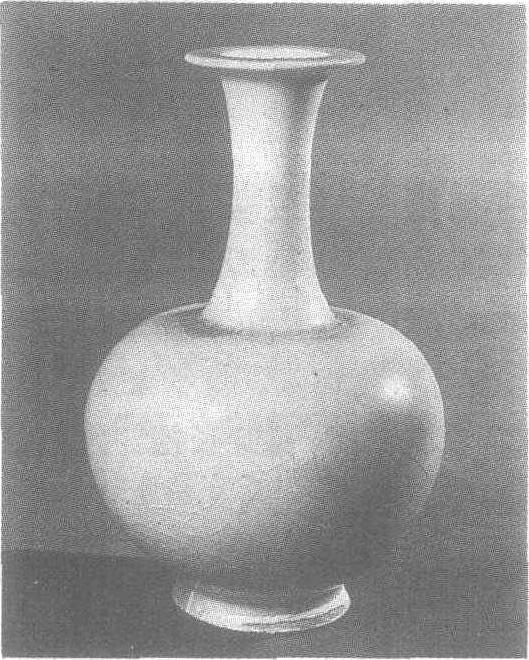白釉长颈瓷瓶
唐。高22.2厘米,口径6.9厘米。1956年河南省陕县刘家渠出土。北京中国历史博物馆藏。此瓶胎质较硬,火候较高。形制为折沿,长颈,丰肩,鼓腹,圈足外撇。器形各部分比例适宜,线条柔和。通身施白釉,积釉处为淡青色,明亮的玻璃质感为规整的器形增添了清澈淡雅的效果。底无釉,有墨书“永”字。此瓶制作时,曾在瓷胎上施一层化妆土,而后再施釉烧制,增加了烧成后的白度。

| 词条 | 白釉长颈瓷瓶 |
| 类别 | 中文百科知识 |
| 释义 | 白釉长颈瓷瓶唐。高22.2厘米,口径6.9厘米。1956年河南省陕县刘家渠出土。北京中国历史博物馆藏。此瓶胎质较硬,火候较高。形制为折沿,长颈,丰肩,鼓腹,圈足外撇。器形各部分比例适宜,线条柔和。通身施白釉,积釉处为淡青色,明亮的玻璃质感为规整的器形增添了清澈淡雅的效果。底无釉,有墨书“永”字。此瓶制作时,曾在瓷胎上施一层化妆土,而后再施釉烧制,增加了烧成后的白度。
|
| 随便看 |
开放百科全书收录579518条英语、德语、日语等多语种百科知识,基本涵盖了大多数领域的百科知识,是一部内容自由、开放的电子版国际百科全书。